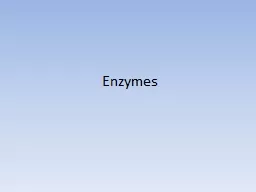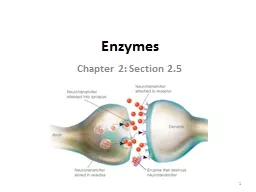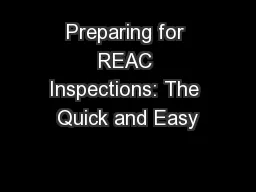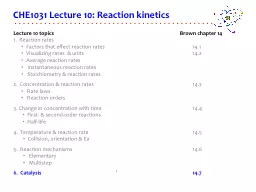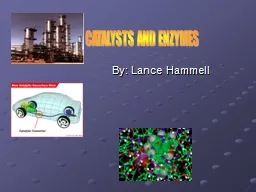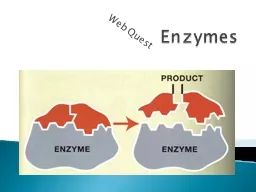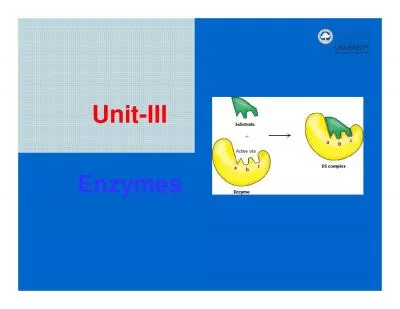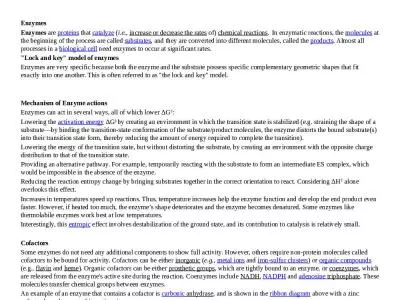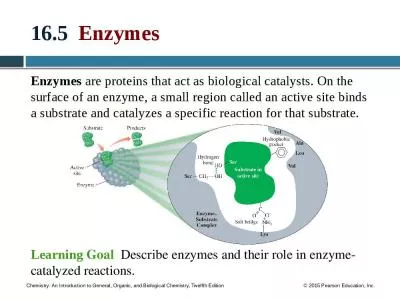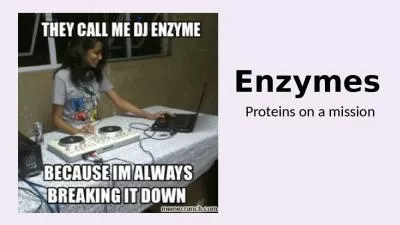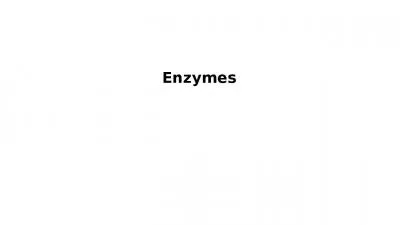PPT-Enzymes Enzymes are… Proteins that act as catalysts (accelerate reactions) by creating
Author : briana-ranney | Published Date : 2018-03-17
Are specific for what they catalyze and do not permanently change during reactions End in the word ase Function of Enzymes Enzymes work by lowering the activation
Presentation Embed Code
Download Presentation
Download Presentation The PPT/PDF document "Enzymes Enzymes are… Proteins that act..." is the property of its rightful owner. Permission is granted to download and print the materials on this website for personal, non-commercial use only, and to display it on your personal computer provided you do not modify the materials and that you retain all copyright notices contained in the materials. By downloading content from our website, you accept the terms of this agreement.
Enzymes Enzymes are… Proteins that act as catalysts (accelerate reactions) by creating: Transcript
Download Rules Of Document
"Enzymes Enzymes are… Proteins that act as catalysts (accelerate reactions) by creating"The content belongs to its owner. You may download and print it for personal use, without modification, and keep all copyright notices. By downloading, you agree to these terms.
Related Documents

